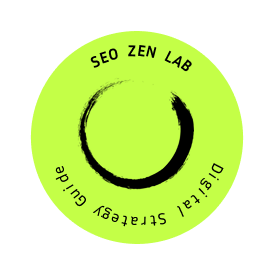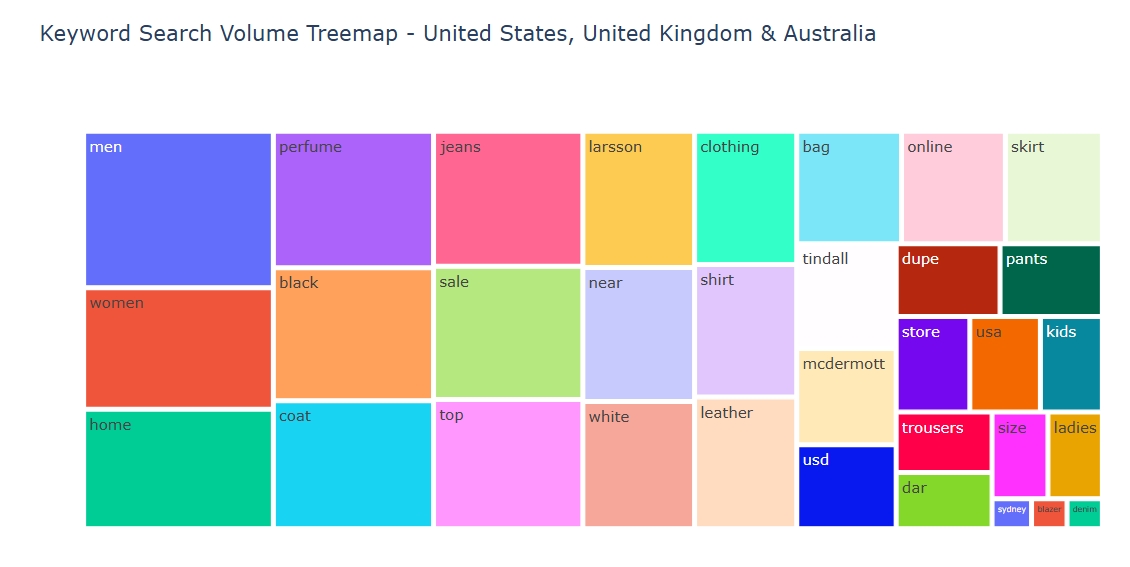Understanding how consumers search for fashion brands online is critical in today’s hyper-competitive digital landscape. In this edition of the “Brand Search Intelligence” series, we explore the keyword trends related to Zara a global fashion giant across three major English-speaking markets: the United States, United Kingdom, and Australia. Through data-driven insights, we reveal variations in search behavior, audience mindsets, and strategic implications for digital marketing teams.
Tools and Methodology
To gather these insights, we followed a three-layered approach combining keyword analytics, data visualization, and automated interpretation:
- Indexed Keywords with Semrush
We used Semrush, a leading digital marketing and SEO tool, to extract indexed keywords and search volume data specific to Zara related queries in each market. The platform’s regional filters allowed for precise, country-specific insights that form the foundation of this analysis. - Visualization with Python in Jupyter Notebook
Once the data was collected, we used Python within a Jupyter Notebook environment to clean, structure, and visualize the information. Libraries such as pandas and plotly enabled the creation of clear treemaps, frequency plots, and trend analyses that showcased keyword popularity and variation across markets. - Automated Analysis with ChatGPT
To streamline interpretation and audience segmentation, we leveraged ChatGPT. It assisted in clustering search intent, identifying personas, and generating strategic implications from the data—dramatically reducing the time traditionally required for manual analysis.
Market Analysis: Zara Keyword Trends and Consumer Personas
Our data reveals both overlapping interests and unique market-specific trends. Let’s break down the top Zara-related keyword themes and what they say about consumer behavior in each country.
United Kingdom: Fashion Explorers & Seasonal Shoppers
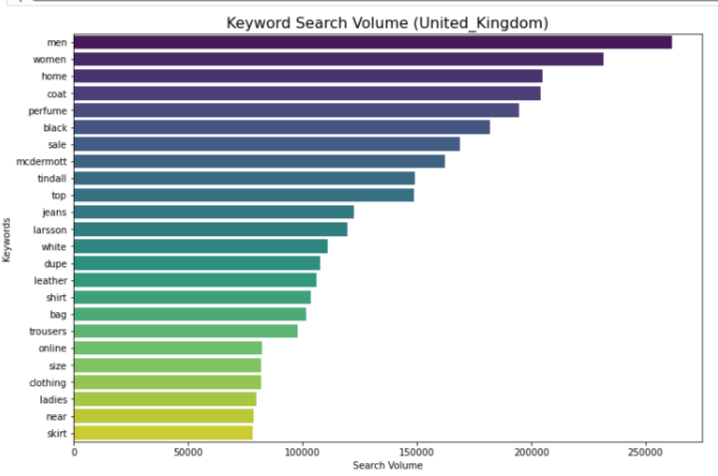
Top Keywords:
“men,” “women,” “home,” “coat,” “perfume,” “black,” “sale,” “tindall,” “jeans,” “larsson,” “dupe,” “trousers.”
Audience Persona:
UK search behavior suggests fashion explorers and seasonal shoppers who are brand-aware and digitally savvy. The high volume for terms like “dupe,” “sale,” and “perfume” indicates consumers looking for value, alternatives, and lifestyle accessories beyond just apparel.
Demand & Insights:
Interest in a broad range of Zara’s offerings—coats, jeans, home items, and perfumes—demonstrates that consumers in the UK view Zara as a lifestyle brand, not just a fast-fashion label. Additionally, searches for “dupe” suggest a segment eager to explore Zara alternatives or lookalikes, potentially driven by price-conscious behavior or trend following.
Strategic Takeaways:
- Highlight seasonal collections and limited-time offers in SEO and SEM campaigns.
- Create content around Zara-inspired looks and affordable styling guides.
- Leverage interest in Zara Home and perfume products by expanding paid keyword targeting beyond fashion.
United States: Brand Loyalists & Bargain Seekers
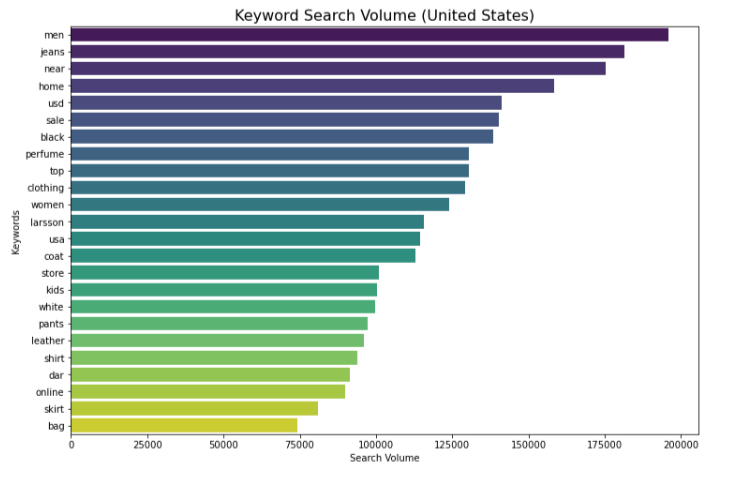
Top Keywords:
“men,” “jeans,” “near,” “home,” “usd,” “sale,” “perfume,” “coat,” “top,” “kids,” “store,” “online,” “bag.”
Audience Persona:
American users display characteristics of brand loyalists and bargain seekers. High search volumes for Zara store locations (“near”), pricing (“usd”), and sales suggest a more conversion-driven behavior—users are likely further along the purchasing funnel.
Demand & Insights:
The prominence of location-based keywords like “Zara near me” shows that physical retail is still top-of-mind. At the same time, “Zara kids” and “store” imply that American consumers are considering Zara for the whole family, not just trendy fashion pieces.
Strategic Takeaways:
- Invest in local SEO and Google Maps visibility for Zara retail stores.
- Run performance max or smart shopping ads featuring Zara’s family-centric collections (e.g., Zara Kids).
- Promote discounts and price-centric offers, especially in ads targeting sale-related searches.
Australia: Trendsetters & Online Shoppers
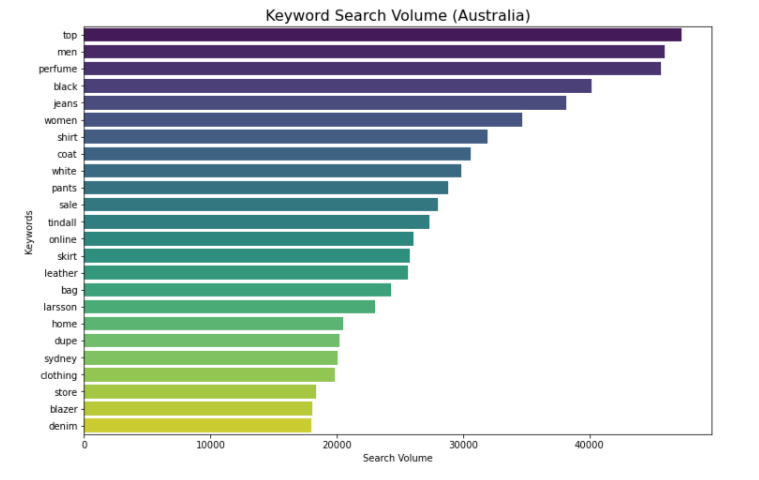
Top Keywords:
“top,” “men,” “perfume,” “black,” “jeans,” “shirt,” “coat,” “white,” “pants,” “sale,” “online,” “sydney,” “dupe,” “clothing,” “denim.”
Audience Persona:
Australian Zara consumers appear to be trendsetters and digitally-native shoppers. Their top queries include product-focused terms (“shirt,” “top,” “coat”) and transactional indicators (“online,” “sale,” “dupe”). Interest in Zara’s availability in “Sydney” reflects local relevance.
Demand & Insights:
A clear emphasis on style categories and availability online signals a preference for discovering and purchasing Zara pieces through digital channels. The presence of terms like “dupe” and “denim” further implies a younger audience chasing affordability and seasonal trends.
Strategic Takeaways:
- Focus on online visibility with Google Shopping and dynamic product ads.
- Create content like “Zara outfit ideas” or “how to style Zara pieces” on social and SEO.
- Prioritize trend-driven inventory and ensure visibility for new arrivals or limited editions.
How Marketers Can Use This Data
Here are a few practical ways marketing teams can turn this insight into action:
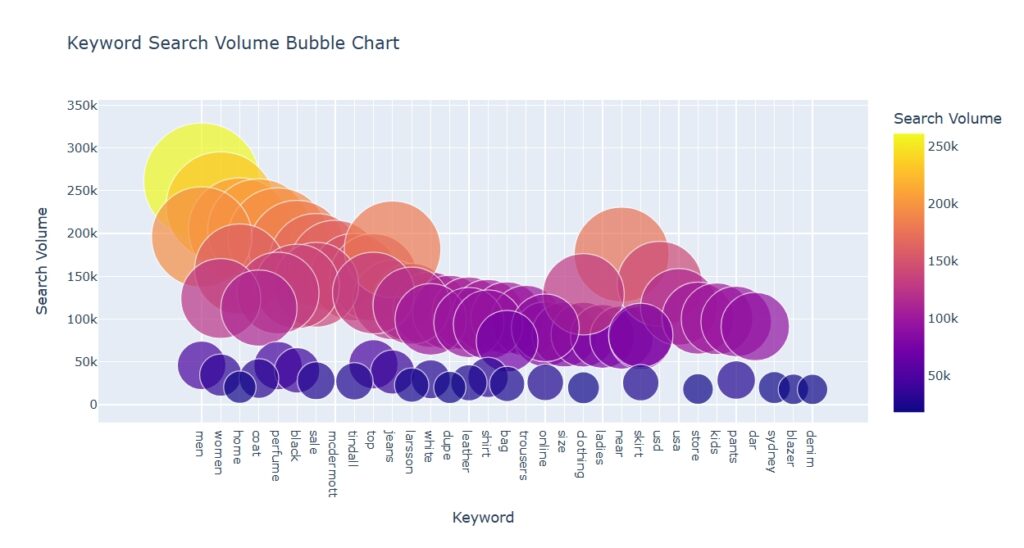
- Keyword Optimization: Prioritize and tailor keyword lists by market. For example, “Zara near me” in the US vs. “Zara dupe” in the UK.
- Persona-based Campaigns: Craft messaging that appeals to trendsetters (Australia), family-focused buyers (US), or price-conscious seasonal shoppers (UK).
- Content Planning: Develop country-specific blog articles, style guides, and product highlights based on trending categories like “perfume,” “jeans,” or “Zara coat.”
- Smart Bidding & SEM Forecasting: Allocate higher bids toward high-intent keywords such as “Zara sale” or “Zara online” and adjust ad copy accordingly.
- Channel Diversification: Use this intelligence to guide performance marketing not only on Google but across TikTok, Instagram, and other trend-driven platforms.
Final Thoughts
Zara’s brand appeal is strong across all three markets, but the search behavior surrounding it varies considerably. Whether it’s store locators in the U.S., seasonal sales in the UK, or online fashion discovery in Australia, understanding these nuances can make or break a campaign.
By combining Semrush data, Python-powered analysis, and ChatGPT’s automation, marketers gain a fast, efficient, and strategic edge in campaign execution. It’s no longer just about tracking volume—it’s about decoding intent, identifying opportunity, and responding with precision.
